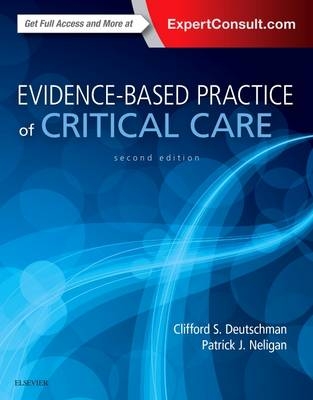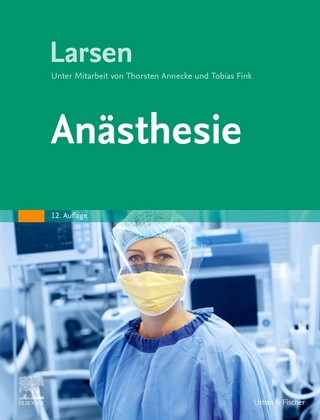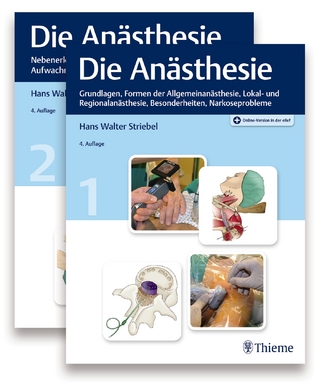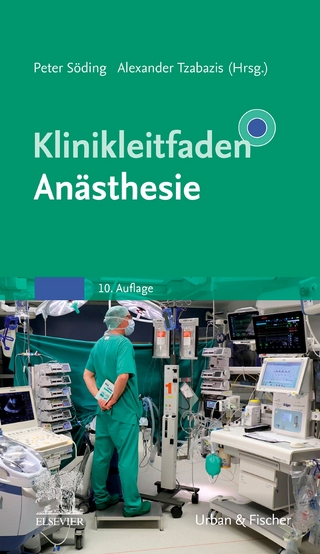
Evidence-Based Practice of Critical Care
Saunders (Verlag)
978-0-323-29995-4 (ISBN)
- Titel erscheint in neuer Auflage
- Artikel merken
Key Features:
- Tap into the expertise of nearly 200 critical-care experts who discuss the wide variety of clinical options in critical care, examine the relevant research, and provide recommendations based on a thorough analysis of available evidence.
- Think through each question in a logical, efficient manner, using a practical, consistent approach to available management options and guidelines.
- Find the information you need quickly with tables that summarize the available literature and recommended clinical approaches.
- Navigate a full range of challenges from routine care to complicated and special situations.
New to this Edition:
- Stay up to date with new issues and controversies such as the redefinition of sepsis · changing approaches to fluid administration · immune suppression in sepsis · monitoring the microcirculation · the long-term sequelae of critical illness · minimizing ventilator associated lung injury · the benefits of evidence-based medicine management guidelines · rapid response teams · and more.
- Benefit from all-new sections covering persistent critical illness and the role of advanced practice nurses and physician assistants in the ICU.
By Clifford S. Deutschman, MS, MD, FCCM, Vice Chair, Research, Pediatrics, Professor of Pediatrics and Molecular Medicine Hofstra-North Shore-LIJ School of Medicine, Cohen Children¹s Medical Center, New Hyde Park, NY
and Patrick J. Neligan, MA, MB, FRCARCSI, Department of Anaesthesia & Intensive Care, University College Galway, Galway, Ireland
Critical Care & Critical Illness
1 Critical Care Versus Critical Illness
2 What Lessons have Intensivists learned during the Evidence Based Medicine Era?
3 Have Critical Care Outcomes Improved?
4 What Problems are Prevalent Among Survivors of Critical Illness and Which of those are Consequences of Critical Illness?
5 Do Early Warning Scores and Rapid Response Teams Improve Outcomes?
Basic Respiratory Management
6 What Are the Indications for Intubation the Critically Ill Patient?
7 Is the Role of Noninvasive Ventilation in the Intensive Care Unit?
8 How Does One Evaluate and Monitor Respiratory Function in the Intensive Care Unit?
9 What Is the Optimal Approach to Weaning and Liberation from Mechanical Ventilation?
10 How Does Mechanical Ventilation Damage Lungs? What can be Done to Prevent It?
11 Is Extracorporeal Life Support an Evidence-Based Intervention for Critically Ill Adults with ARDS?
12 What Factors Predispose Patients to Acute Respitory Distress Syndrome?
Hemodynamic Management
13 What is the Role of iIvasive Hemodynamic Monitoring in Critical Care?
14 Does the Use of Echocardiography Aid in the Management of the Critically Ill?
15 How do I Manage Hemodynamic Decompensation in a Critically Ill Patient?
16 What are the Best Tools to Optimize Circulation?
General Critical Care Management
17 What Strategies Can Be Used to Optimize Antibiotic Use in the Critically Ill?
18 Is Prophylaxis for Stress Ulceration Useful?
19 Should Fever Be Treated?
20 What Fluids Should I Give to the Critically Ill Patient? What Fuids Should I Avoid?
21 Should Blood Glucose Be Tightly Controlled in the Intensive Care Unit?
22 Is Hypothermia Useful in Managing Critically Ill Patients? Which Ones? Under What Conditions?
23 What Are the Special Considerations in the Management of Morbidly Obese Patients in the Intensive Care Unit?
24 How Do I Transport the Critically Ill Patient?
25 Are Computerized Algorithms Useful in Managing the Critically Ill Patient?
Non ARDS, Non-Infectious Respiratory Disorders
26 How Do I Diagnose and Treat Pulmonary Embolism?
27 Should Exacerbations of COPD Be Managed in the Intensive Care Unit?
ARDS
28 What is the Clinical Definition of ARDS?
29 What Are the Pathologic and Pathophysiologic Changes That Accompany Acute Lung Injury and ARDS?
30 What Is the Best Mechanical Ventilation Strategy in ARDS?
31 Is Permissive Hypercapnia Useful in ARDS?
32 Do Patient Positioning in General and Prone Positioning in Particular Make a Difference in ARDS?
33 Is Pulmonary Hypertension Important in ARDS ? Should We Treat It?
34 Inhaled Vasodilators in ARDS: Do They Make a Difference?
35 Do Nonventilatory Strategies for ARDS Work?
36 Are Anti-Inflammatory Therapies in ARDS Effective?
SEPSIS
37 What is Sepsis? What is Septic Shock? What are MODS and Persistent Critical Illness?
38 Is there Immune Suppression in the Critically Ill Patient?
39 What Is the Role of Empirical Antibiotic Therapy in Sepsis?
40 What MAP Objectives Should Be Targeted in Septic Shock?
41 What Vasopressor Agent Should Be Used in the Septic Patient?
42 How Can We Monitor the Microcirculation in Sepsis? Does it Improve Outcome?
43 Do the Surviving Sepsis Campaign Guidelines Work?
44Has Outcome in Sepsis Improved? What has Worked? What has not Worked?
45 How do I Diagnose and Manage Catheter-Related Bloodstream Infections?
46 Is Selective Decontamination of the Digestive Tract Useful?
Persistent Critical Illness
47 Is Persistent Critical Illness an Iatrogenic Disorder?
48 What is the Role of Autonomic Dysfunction in Critical Illness?
49 Is Sersis-Induced Organ Dysfunction an Adaptive Response?
Cardiovascular Critical Care
50 How do I Manage Acute Heart Failure?
51 How is Cardiogenic Shock Diagnosed and Managed in the Intensive Care Unit?
52 When Is Hypertension a True Crisis and How Should It Be Managed in the Intensive Care Unit?
53 How Does One Prevent or Treat Atrial Fibrillation in Postoperative Critically Ill Patients?
54 Is Right Ventricular Failure Common in the Intensive Care Unit? How Should It Be Managed?
Kidney Injury & Critical Illness
55 How Does One Rapidly and Correctly Identify Acute Kidney Injury?
56 How Does One Optimize Care in Patients at Risk for or Presenting with Acute Kidney Injury?
57 What Is the Role of Renal Replacement Therapy in the Intensive Care Unit?
Metabolic Abnormalities in Critical Illness
58 How Should Acid-Base Disorders Be Diagnosed and Managed?
59 What is the Meaning of a High Lactate? What are the Implications of Lactic Acidosis?
60 How Does Critical Illness Alter Mtabolism?
Neurological Critical Care
61 Is it Really Necessary to Measure Intracranial Pressure in Brain Injured Patients?
62 How Should Traumatic Brain Injury Be Managed?
63 How Should Aneurysmal Subarachnoid Hemorrhage Be Managed?
64 How should Acute Ischemic Stroke be managed in the Intensive Care Unit?
65 How Should Status Epilepticus be Managed?
66 How should Guillain- Barre Syndrome be Managed in the ICU?
Nutrition, Gastrointestinal & Hepatic Critical Care
67 Is It Appropriate to "Underfeed" the Critically Ill Patient?
68 How does Critical Illness Alter the Liver?
69 How Is Acute Liver Failure Managed?
70 How does Critical Illness Alter the Gut? How Does One Manage These Alterations?
Endocrine Critical Care
71 Is there a Place for Anabolic Hormones in Critical Care?
72How do I Diagnose and Manage Acute Endocrine Emergencies in the ICU?
Preventing Suffering In the ICU
73 How Does One Diagnose, Treat, and Reduce Delirium in the Intensive Care Unit?
Trauma, Obstetrics & Environmental Injuries
74 How Should Trauma Patients Be Managed in the Intensive Care Unit?
75 What Is Abdominal Compartment Syndrome and How Should It Be Managed?
76 How Should Patients with Burns Be Managed in the Intensive Care Unit?
77 What Is the Best Approach to Fluid Management, Transfusion Therapy, and the End Points of Resuscitation in Trauma?
78 How Should the Critically Ill Pregnant Patient Be Managed?
79 How Do I Diagnose and Managed Patients Admitted to the Intensive Care Unit after Common Poisonings?
80 How Should Acute Spinal Cord Injury be Managed in the ICU?
Hematology Critical Care
81 When Is Transfusion Therapy Indicated in Critical Illness and When is it Not?
82 What Anticoagulants Should be Used in the Critically Ill? How do I Choose?
Critical Care Resource Use and Management
83 How Can Critical Care Resource Utilization in the United States Be Optimized?
84 Does ICU Admission Improve Outcome?
85 How Should Care within an ICU or an Institution Be Organized?
86 What is the role of Advance Practice Nurses and Physicians Assistants in the ICU?
Critical Care Ethics
87 What Factor's Influence a Family to Support a Decision to Withdraw Life Support?
| Zusatzinfo | Approx. 136 illustrations |
|---|---|
| Verlagsort | Philadelphia |
| Sprache | englisch |
| Maße | 216 x 276 mm |
| Gewicht | 1379 g |
| Einbandart | kartoniert |
| Themenwelt | Medizin / Pharmazie ► Medizinische Fachgebiete ► Anästhesie |
| Medizin / Pharmazie ► Medizinische Fachgebiete ► Intensivmedizin | |
| Schlagworte | Fachweiterbildung Intensivmedizin • Intensivmedizin; Handbuch/Lehrbuch • Intensivmedizin; Hand-/Lehrbücher • intensivmedizinische Diagnostik • Intensivmedizinische Versorgung |
| ISBN-10 | 0-323-29995-4 / 0323299954 |
| ISBN-13 | 978-0-323-29995-4 / 9780323299954 |
| Zustand | Neuware |
| Informationen gemäß Produktsicherheitsverordnung (GPSR) | |
| Haben Sie eine Frage zum Produkt? |
aus dem Bereich



